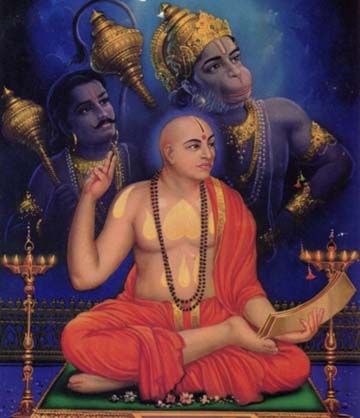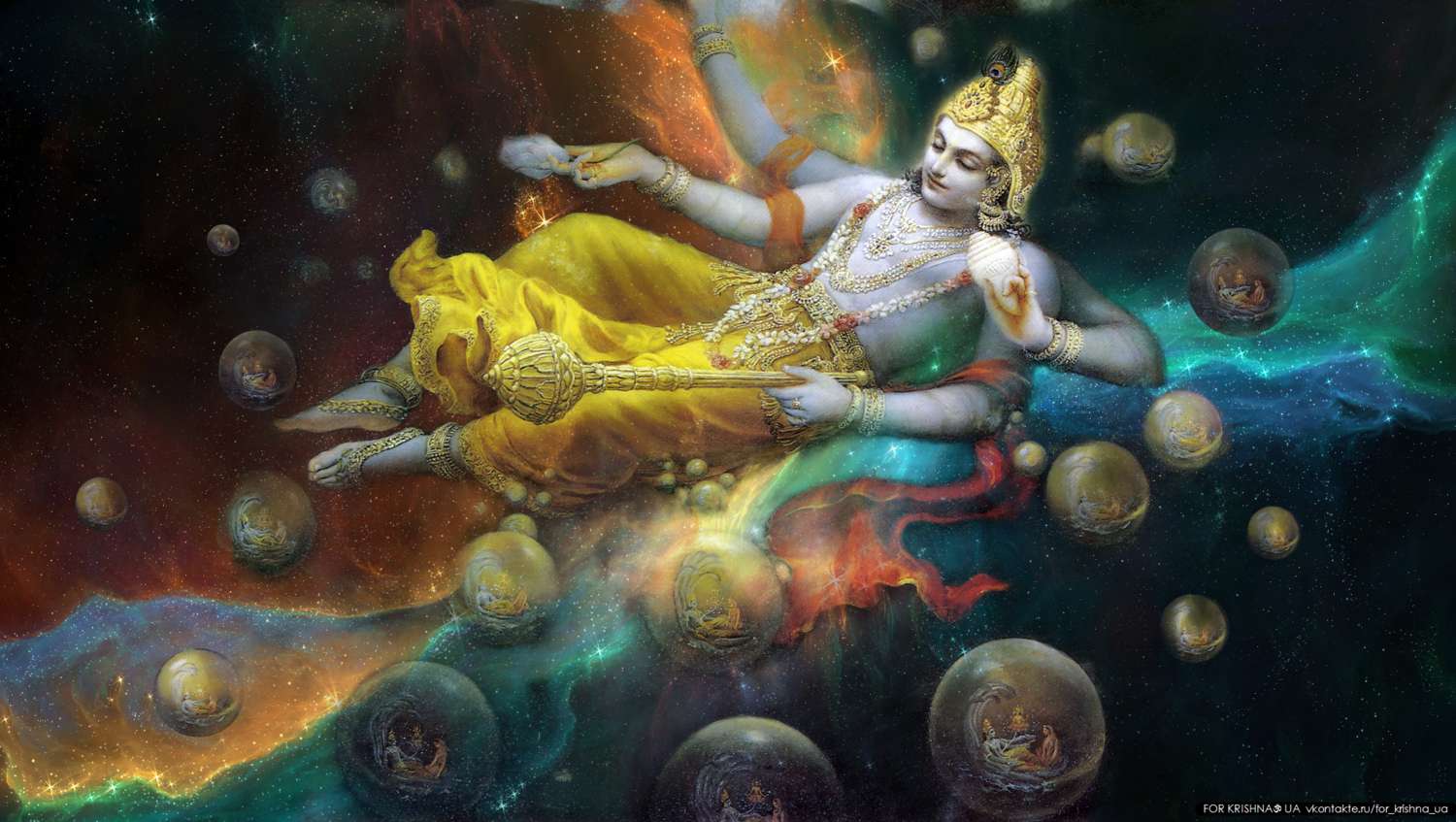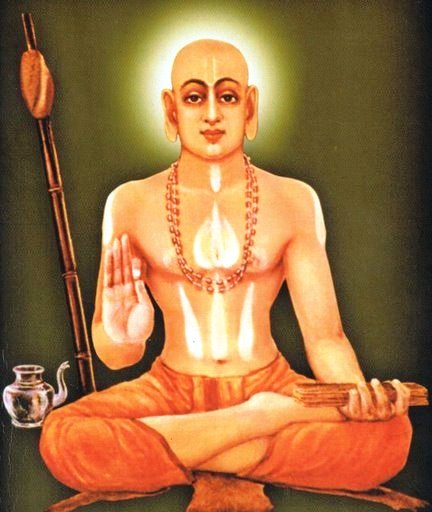
Madhvacharya took diksha at age five, sannyasa at twelve and left home. He appeared with a mission to fight and defeat Sankara's Mayavada (impersonal) philosophy. By giving a pure interpretation of Vedanta-sutra he promoted pure theism. He named his innovative shastric explanation dvaita-dvaita-vada (pure dualism). (In the image: Shrila Madhvacharya).
After Shankaracharya, who had previously toured India spreading impersonalism, Madhvacarya also traveled the length and breadth of India preaching personaltheism and devotion to Lord Vishnu. He defeated innumerable Jains, Buddhists, Mayavadis, atheists, logicians, and agnostics.
With a hope of meeting Shrila Vyasadeva himself Madhvacharya walked up the Himalayas. Vyasadeva gave him a Shalagrama sila called Ashtamurti, approved his Bhagavad-gita commentary, and blessed Madhvacharya with deeper realizations of the sastras.
In Udupi, Madhvacharya installed a beautiful Deity of Gopala standing alone holding a cowherding stick. This Deity manifested from within a chunk of gopi-candana (sacred clay). He established eight mathas (Temples) to lovingly serve "Udupi Krishna." The sannyasi leaders of each matha worship the Krishna Deity with a rigorous regimen of ceremonial ritual, punctuality, and impec-cable personal conduct. Every Ekadashi they observe nirjala (total fast all food and water).
The Gaudiya Vaishnava sampradaya originates with the Madhvas. Shri Chaitanya Mahaprabhu and His followers thoroughly studied Madhva's works before compiling their philosophy. For the Sat Sandarbhas Shri Jiva Goswami drew heavily from Madhva's writings. Jiva Goswami found 'the Gaudiya philosophy of acintya-bheda-abheda tattva in Madhva's Bhagavat-parya. Shri Chaitanya Himself visited Udupi, the seat of Madhva's sect. The Lord introduced Hari Nama sankirtana into their sect.
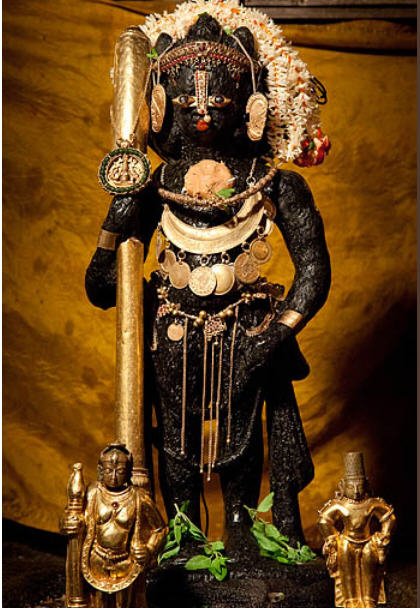
In Udupi, Madhvacharya installed a beautiful Deity of Gopala standing alone holding a cowherding stick. This Deity manifested from within a chunk of gopi-candana (sacred clay). He established eight mathas (Temples) to lovingly serve "Udupi Krishna." (In the image: Udupi Krishna, Karnataka).
The Madhvas and Gaudiyas share many of the same philosophical points. Both consider it necessary to surrender to the lotus feet of the guru (gurupadashraya). In Sutra Bhasya, Madhvacharya cites the Brihat Tantra and Mahasamhita to show that a disciple may reject a "bogus guru" who proves to be useless. He may then accept another qualified self-realized person as his guru.
In Prameya-ratnavalli, Shri Baladeva Vidyabhushana summarized the nine principles common to both Shri Chaitanya's and Madhva's teachings. In Vaishnava Siddhanta Mala, Shrila Bhaktivinoda Thakura says Shri Chaitanya Mahaprabhu ordered all Gaudiya Vaishnavas to carefully observe the nine instructions of truth given by Shri Madhavacharya through our guru parampara.
Shri Madhvacharya's Nine Teachings
(1) Bhagavan Shri Krishna alone is the Supreme Absolute Truth, one without a second.
(2) He is the object of knowledge in all the Vedas.
(3) The universe is real, satya.
(4) The differences between Ishvara (God), Jiva (soul) and Matter are real.
(5) Jiva souls are by nature the servants of the Supreme Lord Hari.
(6) There are two categories of jivas; liberated and illusioned.
(7) Liberation (moksha) means attainmg the lotus feet of Bhagavan Krishna, in other words, entering an eternal relationship of service to the Supreme Lord.
(8) Pure devotional service to Krishna is the only way to attain this liberation.
(9) The truth may be known by pratyaksha (direct perception), anuman (inference or logic), sabda (spiritual sound or Vedic authority.
Shri Madhvacharya serves as Madhavi-gopi in Radha-Govinda's eternal Vrindavana pleasure pastimes.
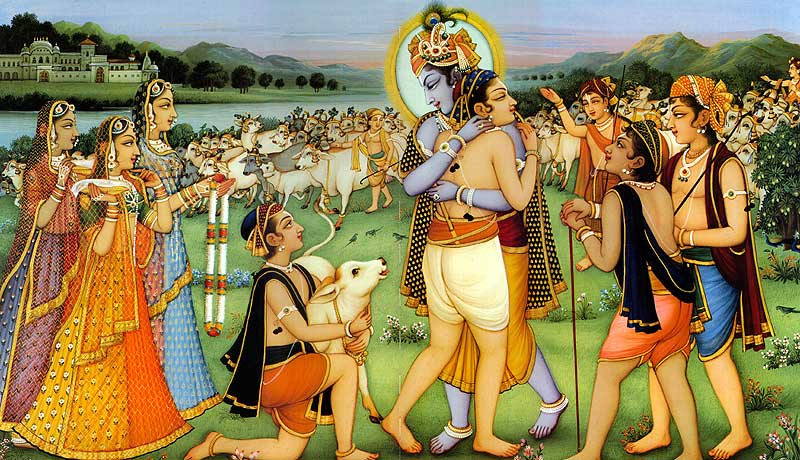
Liberation (moksha) means attainmg the lotus feet of Bhagavan Krishna, in other words, entering an eternal relationship of service to the Supreme Lord. (In the image: Krishna embracing His friend Gopa Kumar).
